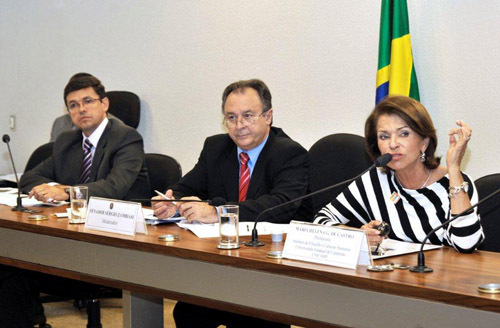
Nations around the world face the challenge of achieving equity in education in diverse societies. In Part 1 and Part 2 of “Education Is My Right,” we gained perspectives from leading voices in the UK and South Africa. Like many other countries, Brazil is working to support its learners. Today in Part 3 of “Education Is My Right,” we will discuss some of the key issues faced as well as the initiatives education leaders have launched to help resolve the problems in Brazil.
It is my pleasure to welcome to The Global Search For Education Maria Helena Guimarães de Castro. Maria is a retired professor of political science at the State University of Campinas/Brazil; an associate researcher of the Center for Public Policies at the State University of Câmpinas, São Paulo; and the executive director of SEADE, a public foundation of the state of São Paulo, responsible for the production and analysis of social and economic data. Previously, she served as Brazil’s vice-minister of education; the president of the National Institute of Education Evaluation and Research/INEP, located in Brasilia; and the state secretary of education of São Paulo. Additionally, I asked Helen Janc Malone, author of Leading Educational Change: Global Issues, Challenges, and Lessons on Whole-System Reform, which features Maria’s work, to weigh in. Helen is the Director of Institutional Advancement at the Institute for Educational Leadership in Washington, DC.
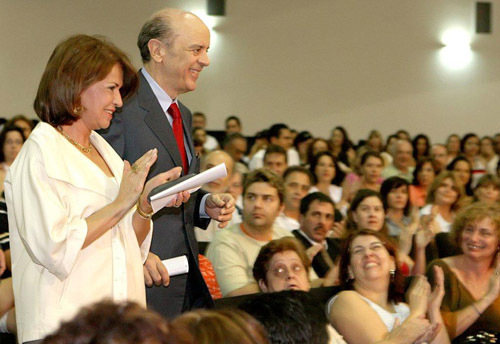
Maria, please briefly summarize some of the issues associated with improving learning in Brazil today?
Brazil now provides basic public education (K-12) to over 93 percent of the population. President Cardoso, who was elected in 1994, started an educational reform program that was continued by subsequent presidents. The reform combined quality and equity measures to cope with the rise in enrollment in all regions of the country. The focus of the reform was on improving teacher quality and quantity, providing a relevant curriculum, and encouraging poor families to enroll their children in school and complete compulsory education.
Resources invested in education have increased markedly: from 4 percent of GDP in 2000 to 5.2 percent of GDP in 2009. Some of the reforms to improve quality included: establishing assessment systems using an internationally benchmarked index; encouraging states and municipalities to take actions to improve education; applying student-based funding formulas that distribute funds fairly within states; providing conditional cash transfers to lift poor families out of poverty through education; extending compulsory education after 2016 from 4 to 17 age.
At the end of 2012, the federal government launched a national program to improve literacy for children in the beginning of primary level. All Brazilian 27 states and 5,500 municipalities are engaged in this program, and more than 3 million students, 7 and 8 years old, are being assessed in reading and math to ensure that they achieve basic skills to continue learning. This initiative is very important to avoid repetition and dropout rates in middle and secondary schools, and to improve learning.
Some evidence from research shows that what drives students to dropout is not the lure of jobs, but rather the poor quality of teaching and the irrelevant curriculum. Dropout rates increase as we move up the education tiers, with the biggest dropout rate occurring in secondary studies, between 15 to 18 years old. The dropout rate at the early stages of education is relatively small, but lower dropout rates accumulated in elementary school and secondary education explain why only 58 percent of students entering primary school graduate from high school. Some measures, such as a national program called PRONATEC, are offering vouchers and loans to secondary students to enroll in vocational education, encouraging them to graduate from the secondary level.
Another important issue in recent years is the growing investment in basic education, prioritizing teacher salaries, structured instruction materials and school incentives to achieve goals in quality education. Some states and municipalities are implementing merit pay in teacher careers.
All these educational policies are focusing on improving the quality of education. National assessments have begun to show some improvement in the results of 5th graders since 2007, but students’ performance is stagnant at the end of elementary school (9th grade) and secondary level. The worst problem is initial teacher training and difficulties in attracting good professionals to teaching.

What are some of the strategies you are working on to achieve equality in education?
I am coordinating research at Fundação SEADE (http://www.seade.gov.br/), which is focused on early childhood education. Our objective is to create an Index of Early Child Development (from zero to 5 years old), mapping public services in education and health offered by all the municipalities of São Paulo State, considering that early childhood education is crucial for the future emotional and cognitive development of our children. The idea is to develop a methodology that could be nationally scaled and to offer support to municipalities around the country.
São Paulo is also working on an impact evaluation of the education profession, which I am a part of, to identify new opportunities for economic development and new pathways for professional qualification and skills.
As a member of the São Paulo State Council of Education, I am coordinating a commission responsible for the discussion and formulation of a strategic document about the reform of secondary education in Brazil. This document is a contribution to the debate on the crisis of Brazilian secondary education and will be discussed during the process of mobilization around the State Plan of Education for the next 10 years.
Finally, like the U.S., Brazil is engaging in a national debate on the Common Core. Funded by the Lemann Foundation, I am participating in a working group designed to address the Common Core Curriculum in Brazil. The group includes representatives from government, academies and private foundations linked to educational policies.
All these efforts are in service of supporting and improving the education pipeline for all students and improving learning outcomes for a great number of children and youth.
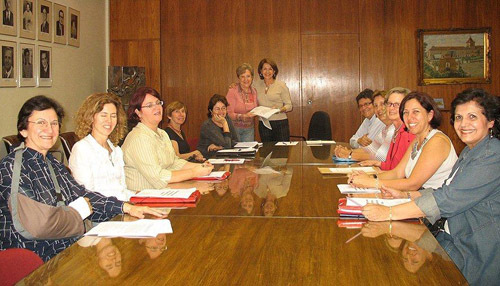
Helen, what can we learn from Brazil’s efforts in system level change?
Brazil has over the past two decades invested in improving education across its vast nation. Focus on basic inputs has increased the overall public education attendance. The focus on teachers, instruction and accountability systems is starting to improve academic outcomes for students, particularly on the elementary school level. However, Brazil continues to struggle with the overall quality of education, with attracting and retaining teachers and principals into the profession, and with a high secondary education dropout rate, which averages 42 percent nationally. Innovation is blossoming on a states’ level, and progress is being made gradually.
The challenge facing Brazil is in many ways reminiscent of many other nations who are working to create conditions that support all learners, creating birth to college/workforce pathways that are engaging, relevant and meaningful. It is a challenge of equity in education in a diverse society. To couple this learning goal, Brazil is building an accountability system and investing in the teaching profession as a way to begin to address persistent issues, from access to early childhood education to secondary education dropout rates and demographic disparities. With the ever-changing world, Brazil stands to benefit in elevating and keeping education its number one priority and strategy for its development, growth and prosperity.

Photos are courtesy of State Secretary of Education of São Paulo and National Congress of Brazil.
For more info on de Castro’s and Malone’s work see Leading Educational Change: Global Issues, Challenges, and Lessons on Whole-System Reform (Teachers College Press, 2013): http://store.tcpress.com/0807754730.shtml
For more articles in the Education Is My Right series: The Global Search For Education: Education Is My Right – India, The Global Search For Education: Education Is My Right – Mexico
In The Global Search for Education, join me and globally renowned thought leaders including Sir Michael Barber (UK), Dr. Michael Block (U.S.), Dr. Leon Botstein (U.S.), Professor Clay Christensen (U.S.), Dr. Linda Darling-Hammond (U.S.), Dr. Madhav Chavan (India), Professor Michael Fullan (Canada), Professor Howard Gardner (U.S.), Professor Andy Hargreaves (U.S.), Professor Yvonne Hellman (The Netherlands), Professor Kristin Helstad (Norway), Jean Hendrickson (U.S.), Professor Rose Hipkins (New Zealand), Professor Cornelia Hoogland (Canada), Honourable Jeff Johnson (Canada), Mme. Chantal Kaufmann (Belgium), Dr. Eija Kauppinen (Finland), State Secretary Tapio Kosunen (Finland), Professor Dominique Lafontaine (Belgium), Professor Hugh Lauder (UK), Professor Ben Levin (Canada), Lord Ken Macdonald (UK), Professor Barry McGaw (Australia), Shiv Nadar (India), Professor R. Natarajan (India), Dr. Pak Tee Ng (Singapore), Dr. Denise Pope (US), Sridhar Rajagopalan (India), Dr. Diane Ravitch (U.S.), Richard Wilson Riley (U.S.), Sir Ken Robinson (UK), Professor Pasi Sahlberg (Finland), Professor Manabu Sato (Japan), Andreas Schleicher (PISA, OECD), Dr. Anthony Seldon (UK), Dr. David Shaffer (U.S.), Dr. Kirsten Sivesind (Norway), Chancellor Stephen Spahn (U.S.), Yves Theze (Lycee Francais U.S.), Professor Charles Ungerleider (Canada), Professor Tony Wagner (U.S.), Sir David Watson (UK), Professor Dylan Wiliam (UK), Dr. Mark Wormald (UK), Professor Theo Wubbels (The Netherlands), Professor Michael Young (UK), and Professor Minxuan Zhang (China) as they explore the big picture education questions that all nations face today. The Global Search for Education Community Page
C. M. Rubin is the author of two widely read online series for which she received a 2011 Upton Sinclair award, “The Global Search for Education” and “How Will We Read?” She is also the author of three bestselling books, including The Real Alice in Wonderland.


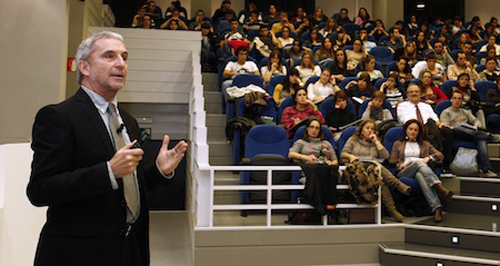
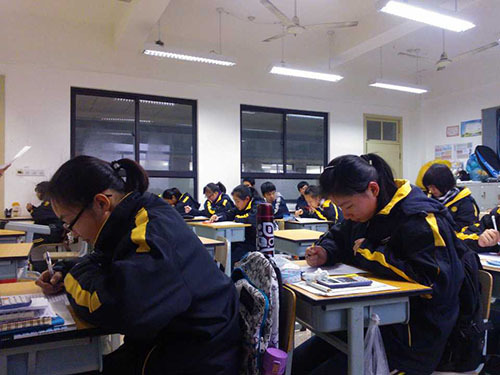
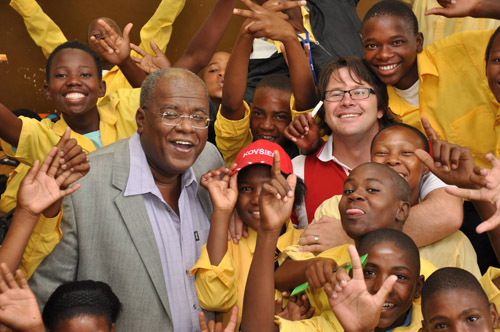
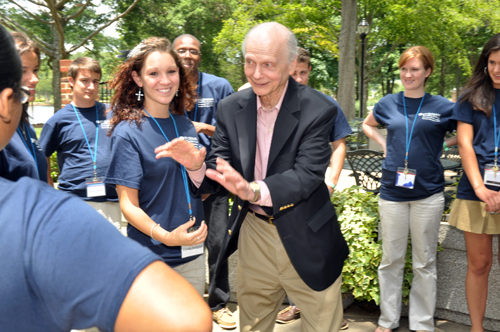
Recent Comments